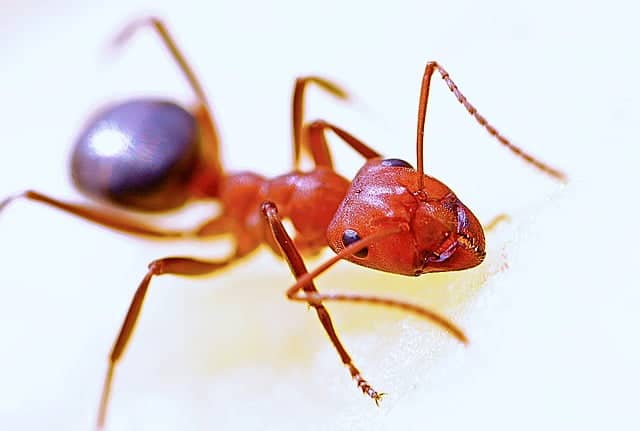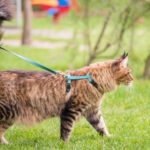Going out to the garden or patio of the house is like entering another world. It is possible to see a large number of plants of all kinds; some are floral, while others give away their fruits. There are leaves of many colors, sounds of birds and animals of any kind.
Among the animals that abound in the gardens are butterflies, frogs, birds and tiny ants. Regarding the latter in particular, although it is true that ants are sometimes considered a pest, most of the time they contribute to things going well within the ecosystem that works outside the home.

They are industrious, organized, strong and collaborative. In fact, by observing them for a couple of minutes it is possible to learn a lot about the way they live and how they interact with each other and with other species.
This curiosity has led many people to want to have them as pets. Yes, they are actually very unconventional pets, but this does not mean that you cannot have them as such and enjoy their company.
Of course, since it is not a common pet, it will require certain care so that they can survive. Would you like to have an anthill at home? Do you dare to do something different? If that is your wish, here you will find the way to make it come true.
Here you will find out everything that is related to the breeding of ants, what they eat, how they reproduce and what conditions they need to continue living, among many other things.
By the end of reading this article, you will have the right tools to get your project up and running and start raising ants in your home. Involve other family members, such as children, in this project. This way you will promote an ecological conscience in them. Let’s see how you can do it.
Instructions to have an anthill at home
Ants are among the insects that attract the most attention, not only because of their physical characteristics, but also because of their habits and lifestyle. If you are interested in having your own anthill at home, it is important that you get carried away by the following recommendations:
- The first thing you have to do is find an appropriate container where they can develop properly. There is a wide variety on the market. Therefore, make sure you buy one that fits the needs of your new pets.
- Put the right substrate. While it is true that you can use soil from your own garden, you must make sure that it is completely free of organic debris, such as food remains, from any animal or other living insect. Nor should it contain inorganic remains, such as cigarette butts, glass or plastic, as this could spoil everything.
- Mix two parts of soil with one of sand and pour the entire mixture into the container you chose for your ants. Try not to make it too compact so that the ants can move easily.
- Check the oxygen level. This can be a real challenge, as there is a chance that you will do something wrong and they will end up escaping. To prevent this from happening, make holes in the top of the nest. Then put paper between the lid and the holes. Finally, pierce the paper with a pin.
- In this way, you will guarantee a correct supply of oxygen so that your ants can develop and live happily.
- Get your ants. If you intend to get them from your garden, that may not be a good idea, as you will need a queen to begin with and she is almost always in the deepest and darkest of the nest, along with the young.
- Your best option is to buy an ant kit in the market, as they are responsible for including everything you need to raise them from home without major setbacks.
Now, what do you need to be able to raise and care for ants in your home? We’ll be talking about that right now.
What do you need to have an anthill at home?
- An anthill. As we have already mentioned before, this is the first thing you have to get in order to have ants at home as pets. There is a wide variety of anthills, many of which are homemade or prefabricated. In general, they are usually made with cork gel, acrylic, plaster, etc.
- A foraging area. In other words, a second space that is connected to the anthill and where the ants can dedicate themselves to looking for food, eliminating waste and exercising, essential activities for their well-being.
- The food. This will depend on the size of the anthill, how many you have, and the type of ants. Ants are generally omnivores. However, there are also honeyeaters and others feed on insects, fruits and seeds. This fact warrants that you place in the foraging area, the correct food for the species you have. However, make sure not to put too much so that it does not end up being damaged.
- The water. This is a resource that can never be lacking. Although it is true that they obtain most of their hydration through the same foods, sometimes they may need to reinforce it so that they do not become dehydrated and end up dying. However, you should not dump the water directly onto the ground; doing so could lead to drowning. The best way to supply them with water is by placing cotton wool soaked in water inside the nest, which you will have to change every two or three days.
As you can see, having an anthill at home is not as complicated as it might seem at first glance. However, what other recommendations should you take into account to be successful in breeding ants?
Tips for having an anthill at home
You should not force the ants into the nest. Doing it is easier than you imagine. In most kits, the ants come in small test tubes, which contain water, a cotton swab to make a separation, seeds, and a small colony along with the queen, worker ants, and a few soldiers.
Remove the cap from the test tube and place it in the forage area. They will be in charge of deciding the best time to move into your new home. To make it easier for them, dim the light a bit. This way the queen will feel comfortable enough to take the first step and lead the entire colony.
Don’t try to get a queen ant from your garden. In general, they do not leave the interior of the anthill. They are always in the background directing the proper functioning of the colony.
They only emerge during the nuptial flight. This is the mating period. If you manage to capture one, this would represent the end of the anthill, since, without its queen, all the other ants would end up dying. Therefore, it is best that you give up on that idea.
Cleaning the colony is a very fundamental aspect. However, this should be limited to the top of the forage. Don’t touch the inside of the anthill. The same ants will be in charge of bringing waste, food remains and even corpses to the surface. So there is no need for you to search in the background.
Do not place the nest near a window or a lamp. Ideally, it should be in a dark area, as ants prefer that type of environment. Nor should you move them from one place to another. If you do, this could cause their galleries to collapse and many would end up dying, even if you don’t realize it.
Therefore, the best thing you can do is think about what space you can place the anthill in and, after you have identified it, try not to move it from there unless it is for compelling reasons.
All these recommendations will allow you to have enough capacity to have your own anthill at home. What are you waiting for to get to work? Remember that this is an activity in which you can involve the little ones in the house.














